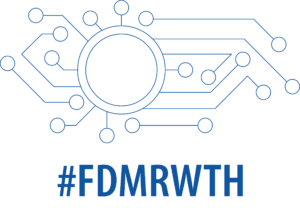The last article in the “RDM explains” series was about how to find research data. But what happens if you have found relevant data and use it in your scientific work? In order not to run the risk of unintentionally plagiarising, care should be taken to cite all sources in a scientifically correct manner. But how exactly do you do that with research data? In this article, we present important principles and possibilities.
Why should research data be cited?
To ensure good scientific practice, research data from others should be identified through appropriate citation. On the one hand, this gives appropriate credit to the work of others. On the other hand, readers can better understand and check the argumentation and results of the research. This, in turn, serves the purpose of reusability.
How exactly should research data be cited?
So far, there is no unified standard, so the respective citation guidelines may differ depending on the subject discipline, publication publisher, repository or journal. It is best to find out from your review board and the relevant institutions about the citation guidelines that apply in each case.
Recommendations
A data citation should (at least) include information on the author, publication date, title, publication agent and an identifier. The following citation style is recommended by both the registration agency for social and economic data da|ra and the international registration service DataCite:
Creator (Publication date): Title. Publication agent. Identifier
Further information such as version or type of resource can be added optionally:
Creator (Publication date): Title. Version. Publication agent. General resource type. Identifier
Explanations and notes on the individual elements
- Creator: Name of the person(s) who produced data. From five names onwards, abbreviate with ‘et. al.’.
- Publication date: Only the year of publication (or data collection) is given.
- Title: Title of the resource and, if applicable, further titles of the study/dataset. Main title and subtitle are separated with ‘.’. Alternative and translated as well as original titles are not quoted in the citation.
- Version: Version number of the resource
- Publication agent: Name of the data centre/repository/publisher or institution providing the data.
- General resource type: Dataset, text, video, image or other resource types
- Identifier: Indication of the persistent identifier such as DOI. Preferably, the DOI name should either be printed with the URL of the resolver (http://doi.org/doi:10.4232/1.10770) or underlaid with a hyperlink (doi:10.4232/1.10770).
Tip from the Editorial Team
The DOI Citation Formatter creates a complete citation based on the DOI. There are more than 5000 citation styles to choose from.
Learn more
More information on the topic can be found in the DataCite metadata schema.
If you have any questions about citing data or research data management in general, just contact the IT-ServiceDesk. The RDM team looks forward to hearing from you.
For more information on RDM, please also visit the RWTH web pages.
_______
Responsible for the content of this article is Sophia Nosthoff.






Leave a Reply
You must be logged in to post a comment.